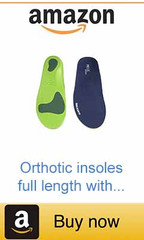Fat pad impingement – Causes, diagnosis, and treatment
- Maryke Louw
- Nov 17, 2023
- 9 min read
Updated: Nov 27
Hoffa’s fat pad impingement syndrome (also known as infrapatellar fat pad impingement) occurs when a fat pad in your knee gets pinched between the bones of your knee joint. There are a variety of possible causes, and this painful condition often goes together with other problems in and around the knee.
This article explains the causes, how to correctly diagnose fat pad impingement, and what the treatment options are. Remember, if you need more help with an injury, you're welcome to consult one of our physios online via video call.

This article contains affiliate links. We might earn a small commission on sales at no extra cost to you.
In this article:
We've also made a video about this:
Where is the infrapatellar fat pad?
You have four main fat pads in and around the knee. Hoffa’s fat pad, the bad guy in this story (or the victim, depending on how you look at it), sits below your kneecap and behind the patellar tendon, which connects the muscles over the front of your thigh (quads) to your knee joint. The fat pad lies across the line where the bottom end of your femur (thigh bone) meets the top end of your tibia (main shin bone).

The infrapatellar fat pad contains many nerve endings, which is why it can be so painful when it is pinched. These nerve endings are thought to send signals to your brain about your knee’s position and how it is moving, helping with position sense and balance.
The fat pad is also thought to act somewhat like a shock absorber, helping to distribute forces going through your knee more evenly and stabilising the patellofemoral joint (kneecap).
What happens when you have infrapatellar fat pad syndrome?
Fat pad impingement is when your infrapatellar fat pad is pinched (impinged) between your kneecap and thigh bone or between your thigh bone and shin bone.
The fat pad is meant to slide and move as you bend and straighten your knee, but sometimes its movement gets restricted due to swelling or thickening or scar tissue, causing it to get pinched when your knee is fully straightened.
Researchers are not 100% sure why this happens, but some of the causes are thought to include:
Getting hit on the fat pad or falling on it, causing it to swell.
Repetitive trauma through hyper- or over-extending (straightening) the knee can cause the fat pad to become inflamed and swollen and thicken over time.
There is evidence that high volumes of intense exercise (running in a wheel) can cause fat pad swelling in rats, but we don’t know whether or how this relates to humans.
There is some evidence that suggests that the position or shape of your kneecap and bones may play a role.
There also appears to be a link between osteoarthritis and fat pad impingement, but it’s not yet clear how this works.
How to diagnose fat pad impingement (syndrome)
Fat pad impingement as a primary diagnosis, where only the fat pad is injured, is not that common. It appears more often than not with other knee injuries, e.g. patellar tendonitis, patellofemoral pain syndrome, meniscus tears, osteoarthritis, and ACL injuries. This is why “syndrome” is often added to the diagnosis, meaning there is more than one thing at play here.
To diagnose fat pad impingement correctly, your physiotherapist will combine information from how the injury started, where you feel your pain, and how the injury now reacts to specific situations and movement tests. If the physio is still unsure, an MRI scan can be useful, but in most cases you don’t need a scan to diagnose this type of knee injury.
Common fat pad impingement symptoms include:
Patients describe a burning or aching pain deep to and either side of the patellar tendon, near the lower point of the kneecap.
The area below the tip of the kneecap usually looks puffy and a bit swollen.
The pain is most commonly felt when you fully straighten your knee or do activities that involve straightening the knee, e.g. going up stairs.
Sitting with your knee bent for a long time may also hurt, due to the patellar tendon compressing the fat pad against the thigh bone.
The physio can usually reproduce the pain by taking the leg and pushing it straight all the way.
Tightening up the quads with your knee fully straight usually also reproduces the pain.
It often hurts to stand for long. Some people with fat pad impingement have a habit of standing with hyper-extended knees (knees pushed back super far), which means that they are not using their quad muscles to keep their legs stable, but rather hanging off the ligaments of their knee joints.
It often hurts more to walk in flat shoes, because your knee has to go straighter.

Anterior knee pain is often misdiagnosed as fat pad impingement, because when people press on the fat pad, it causes pain, and then they think, “Oh, I have fat pad impingement!”
But, as mentioned before, this fat pad has lots of nerve endings, and these can become sensitised and sore when other things close to the fat pad are injured. So, making a diagnosis based on just pressing on it is not really that accurate.
Top tip: If activities that load the knee in a bent position (like the downward movement of a squat) hurt, then it is likely not the fat pad causing your pain. It may rather be the patellar tendon or the patellofemoral joint (kneecap) that has issues.
Fat pad impingement treatment options
We discuss 12 of the most useful treatments for fat pad impingement below. It is important to understand that we are all different, and our injuries are never 100% the same. If a treatment or exercise has worked for someone else, it does not necessarily mean that it is right for you. Always compare how you feel before and after the treatment to decide whether you should use it or not.
The first step in fat pad impingement treatment is to try and reduce the irritation and swelling.
1. Avoid painful positions
The best way to stop irritating the fat pad is to avoid positions that cause pain. One example is standing with your knee slightly bent rather than pushed all the way straight.
However, these are temporary adjustments. Once your knee has recovered, you should start moving it through its full range of motion again, otherwise you may end up with other injuries.
2. Shoes and gait
Flat shoes usually require your knee to extend more when you walk. By wearing shoes with a slight heel (like most running shoes) or placing heel-lifting insoles into your shoes, you may be able to reduce the pinching when walking, which will help your painful fat pad to calm down more quickly.
Shortening your stride may also help.
Here are some examples of heel-lifting insoles available on Amazon:
3. Taping
Some patients find that taping their knees can make a significant difference. The tape is applied in such a way that it tilts the lower part of the kneecap up, which is thought to reduce the pressure on the painful fat pad.
There is currently no research available to indicate whether taping is truly effective. My advice is to test it – if your knee feels more comfortable with the tape on, then it is likely worth it.
You will need someone else to apply the tape for you, because it can be hard to relax your leg if you do it yourself. The white tape that is applied as the bottom layer is called Hypafix – it helps the top layer tape to stick better, but is also hypoallergenic and helps to protect the skin.
Here’s a video demo on how to tape your knee to relieve fat pad impingement pain. What you’ll need:
● 5 cm / 2 inch Hypafix tape for the bottom layer
● 3.8 cm / 1½ inch zinc oxide tape for the top layer
● Scissors.
4. Ice
Applying ice over the fat pad can help to reduce the pain, swelling, and inflammation. You can find instructions on how to apply ice safely here.
5. Anti-inflammatory medication (like ibuprofen)
Anti-inflammatory medications like ibuprofen (tablets or gel) may be useful to help reduce the inflammation and swelling. Speak to your doctor before taking any medication, as it may not be appropriate for you.
6. Manual therapy
Some patients with fat pad impingement may have a stiff kneecap that doesn’t move as freely as the one on the other leg does. In such cases, some clinicians recommend manual therapy, where the physiotherapist mobilises the kneecap. We don’t know whether this makes a difference, since there isn’t any research that has tested the effect of this versus no treatment and/or other treatments.
7. Stretching
Stretching the quadriceps muscles is sometimes advised, since it is thought to help free up the kneecap. But this should only be tried once the acute pain has settled – stretching too early into your recovery usually makes the pain worse. You can foam roll your quads instead.

If you do use stretching as part of your treatment, check how your knee reacts. It is quite common for stretching to feel good in the moment and then cause increased pain later in the day. If your knee hurts more after stretching, leave it out.
Top tip: Whenever you introduce something new to your treatment programme, add one thing at a time and observe the 24-hour pain response to see whether it reduces or increases your pain.
8. Strengthening exercises
It is usually best not to crack on with exercises that work the quadriceps muscles too early in recovery, as this often aggravates the pain, but you can usually get going with other muscle groups, e.g. glutes and hamstrings, in the meantime.
Muscles worth strengthening:
Gluteal and core muscles: These can help to improve your movement patterns and reduce the strain on your knee when you walk and run. The clam exercise is usually a safe one to start with in the early stages of recovery.
Hamstrings: The hamstrings help to control and prevent hyper-extension of the knee when you walk and run. The bridge exercise is usually a good option for early rehab.
Foot and ankle muscles: They can help to improve your movement patterns by reducing excessive pronation. You can find examples of exercises to correct overpronation here.
Quadriceps muscles: This is so you can control you knee better when it is fully straight and stop it from just passively flicking back into hyper-extension. Avoid the leg extension machine at first; once you’re ready to start with quad exercises, doing gentle isometric squats with the knee remaining bent is a good place to start.
9. Retraining movement patterns (if needed)
This will not be necessary for everyone with Hoffa’s fat pad impingement. If your physio has found that a part of your problem is that you stand with your knee in hyper-extension or flick it back when you walk, they may teach you ways in which to unlearn those patterns. This can help you to avoid getting fat pad impingement again.
10. Orthotics
If your foot rolls in excessively (over-pronation) when you walk or run and it is not correctable through exercise alone, you may benefit from arch-supporting orthotics.
These orthotics, available on Amazon, would work well for supporting your foot arches:
11. Corticosteroid injections
Corticosteroid injections can work very well to reduce pain, swelling, and inflammation. However, they also have unwanted side effects, the most important in this case being fat pad atrophy. This is when the steroid injection causes your fat pad to shrink, which can actually lead to even more pain.
For this reason, corticosteroid injections are usually only considered as the penultimate option, with surgery being the final one, after you’ve tried everything else.

12. Surgery
Surgery should be left as the last resort, because it is not always successful. Keyhole surgery is recommended, where the surgeon goes in and only removes the scar tissue and thickened areas. The current recommendation is to leave the unaffected parts of the fat pad intact.
How we can help
Need more help with your injury? You’re welcome to consult one of the team at SIP online via video call for an assessment of your injury and a tailored treatment plan.

We're all UK Chartered Physiotherapists with Master’s Degrees related to Sports & Exercise Medicine. But at Sports Injury Physio we don't just value qualifications; all of us also have a wealth of experience working with athletes across a broad variety of sports, ranging from recreationally active people to professional athletes. You can meet the team here.

About the Author
Maryke Louw is a chartered physiotherapist with more than 20 years' experience and a Master’s Degree in Sports Injury Management. Follow her on LinkedIn and ResearchGate.









































